Search
Did you mean: Behistun Inscription?
Search Results
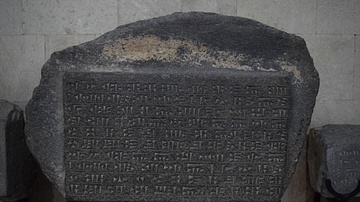
Image
Cuneiform Inscription of Arguishti
The famed "Cuneiform of Arguishti," which celebrates his construction of the fortress of Erebuni in 782 BCE and his martial exploits in nearby regions. (Erebuni Historical and Archaeological Preserve, Yerevan, Armenia.)
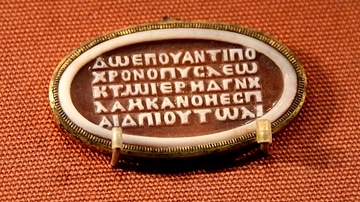
Image
Sardonyx Cameo Showing Nonsense Greek Inscription
Skillful Roman cameo-carvers exploited the tonal contrast of some stones. This could be a simple two-tone contrast or a more subtle variation using all available gradations of shade. Sardonyx was particularly valued as a cameo-stone. From...
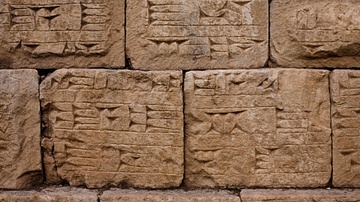
Image
Jerwan Aqueduct Inscription
Cuneiform writing on the Jerwan Aqueduct (703-690 BCE). King Sennacherib I of Assyria made sure that, thousands of years later, people would know that it was he who ordered the construction of this feat of Assyrian engineering.
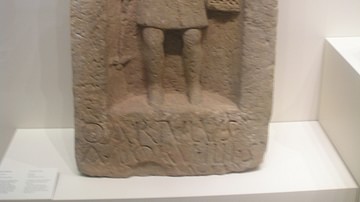
Image
Funerary Inscription of a Child
Funerary stela of a mining boy from Hispania Citerior, 1st century CE.
National Archaeological Museum, Madrid.
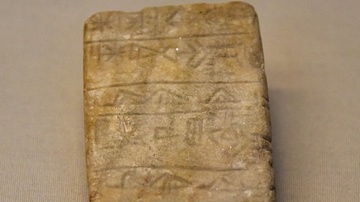
Image
Sumerian Stone Foundation Inscription
It was a Sumerian tradition to deposit or bury objects bearing inscriptions within temples and important public buildings. These recorded the names of the persons who were responsible for the building and also ensured divine protection. The...
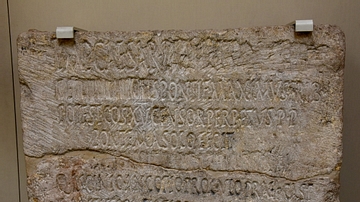
Image
Latin inscription with Damnation Memoriae of Domitian
Building operations were supervised by Gaius Julius Magnus, centurion of the 3rd Cyrenaican legion. The emperor Domitian's name has been erased following damnatio memoriae (formal condemnation of his memory) after his death in 96 CE. Roman...
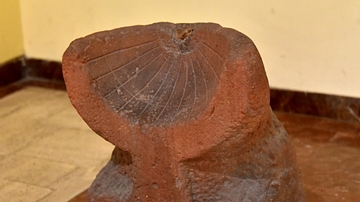
Image
Sun Dial with Aramaic Inscription from Madain Saleh
The concave inner side of the half dome-shaped dial is divided into 12 parts by 11 radial lines. The rod perpendicular to the center is the pointer. The shadow of the pointer falls on the radial lines as the sun moves. Although the system...
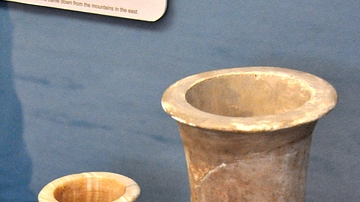
Image
Vases wtih Naram-Sin Inscription
These two marble vases were inscribed with the name of Naram-Sin, king of Sumer and Akkad. Reign of Naram-Sin, 2254-2218 BCE. From Mesopotamia, Iraq. (Istanbul Archeological Museums/Ancient Orient Museum, Istanbul, Turkey).
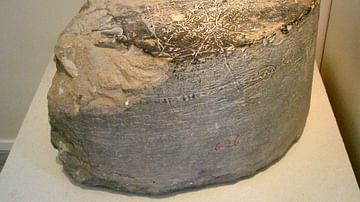
Image
Cynisca's Inscription
Inscribed circular stone base of a four-horse chariot dedicated by Cynisca of Sparta, winner of chariot races, made by Apelles of Megara, from Olympia, after 390-380 BCE.
Archaeological Museum, Olympia.
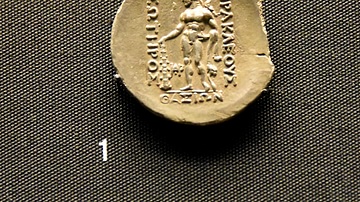
Image
Celtic Coin Copying Greek Inscription
Early Iron Age Celtic people copied Greek coins, often faithfully reproducing their designs and inscriptions. This suggests that Thracian die-engravers were illiterate, as legible Greek letters were gradually replaced by abstract patterns...